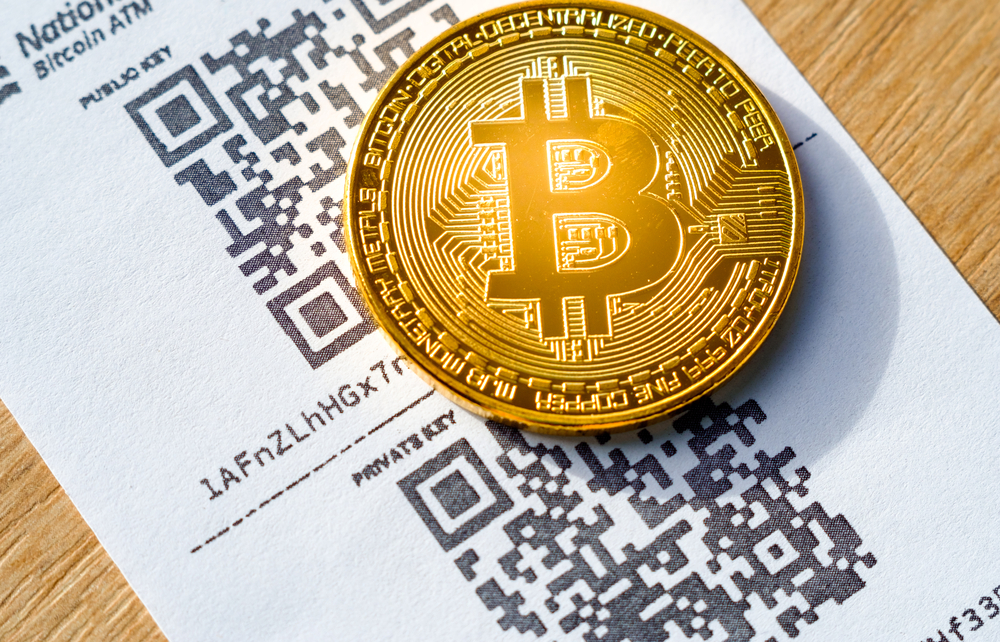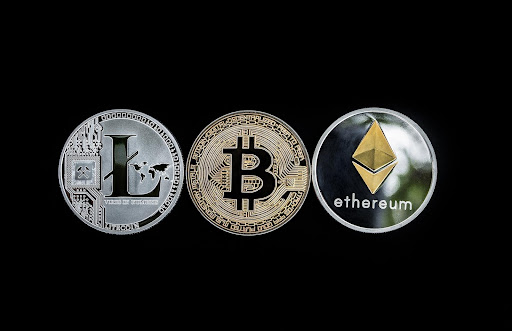Business News
5 Things the War in Ukraine Has Revealed About Cryptocurrencies
Published
2 years agoon

On February 22nd, 2022, the War in Ukraine erupted. The ensuing conflict has been one of Europe’s most significant, bloodthirsty, and costly conflicts since the Second World War. But as well as revealing flaws in everything from the Russian military to the NATO alliance, the conflict has also revealed some very stark truths about cryptocurrencies.
After all, this conflict is defined by increasing sanctions on the Russian state and has featured numerous innovative crowdfunding models based on blockchain technology. From organisations utilising blockchain to offer humanitarian relief in the war to the authorities of countries attempting to enforce their control over cryptocurrencies, the modern phenomena of blockchain and crypto are playing a significant role in this equally modern war.
One of the main ways that cryptocurrency plays a role is due to the plethora of ways that the transfer of fiat money via centralised systems has been interrupted. Throughout human history, centralised finance systems have been susceptible to collapsing under the pressure of war and political unrest. Cryptocurrency, and the decentralised blockchain technology it’s hosted upon, is able to operate much more efficiently.
In this article, we’re going to look into the numerous applications of cryptocurrency and blockchain that the ongoing war in Ukraine has revealed.
Cryptocurrency Used for Fundraising
In what has been Europe’s most significant military showdown since the Second World War, the conflict in Ukraine has demonstrated how crypto can be effectively used to raise much-needed funds in the midst of war.
At the outbreak of the conflict, the Ukrainian regime in Kyiv publically announced that they would be open to accepting war relief donations in the form of cryptocurrency in an effort to include a wider spectrum of potential donors. In turn, this saw the formation of the Crypto Fund of Ukraine.
Ukraine’s Ministry of Digital Transformation spearheads the Crypto Fund of Ukraine. The fund was established in partnership with the likes of Kuna, FTX and Everstake to support humanitarian aid and provide military support for Ukraine.
The crypto fund is said to have played a serious role in enabling Ukrainian national defence and allowed the Ukrainian regime to accept more than $100 million worth of cryptocurrency donations. The funds were used to buy vital military aid such as body armour, night vision optics for fighting in the winter months, and unmanned aerial vehicles (UAVs) to monitor Russian positions.
But the Crypto Fund of Ukraine is one of many ways decentralised technology has been used to raise funds to support Ukraine. Other cryptocurrency fundraiser organisations aiming to support Ukraine have also utilised decentralised autonomous organisations (DAOs). One of the most well-known is the UkraineDAO.
Like the Crypto Fund of Ukraine, the UkraineDAO was established at the outbreak of the conflict to muster financial support for the Ukrainian military. The project is spearheaded by people like Nadya Tolokonnikova, one of the founders of the Feminist anti-Putin punk band Pussy Riot and seeing involvement from the likes of the generative NFT studio called Trippy Labs. So far, the UkraineDAO project has successfully raised over $8 million in donations.
Interestingly, the UkraineDAO was behind the successful sale of a nonfungible token (NFT) that took its place amongst the list of the top 20 most expensive NFTs of all time. The NFT was centred around a Ukrainian flag and sold for more than $6 million worth of Ether (ETH).
As well as a method to receive donations, various humanitarian organisations have used cryptocurrency on the ground in the war in Ukraine. World Central Kitchen, an organisation which provides food for those in need during times of war and natural disasters, accepted donations in Ether (ETH) during various crowdfunding campaigns to carry out their work to feed those affected by the war in Ukraine.
But, of course, where there are good intentions, there are also malicious intentions. Cryptocurrency has equally been used by those with ill intentions in the conflict in Ukraine, which brings us to our next point.
Malicious Use of Crypto in War
Whilst the helpful intentions of humanitarian organisations and other fundraisers have received considerable attention, there is also an underbelly of malicious crypto activity that has undermined the efforts made by those trying to support Ukraine.
For example, a series of online fraudsters have begun a highly-organized campaign to rip off would-be donors by impersonating spokespeople of approved cryptocurrency organisations taking part in fundraising campaigns for Ukraine.
It’s believed that these cybercriminals have likely dispatched millions of emails in an effort to deceive people worldwide. A common tactic used will be to impersonate Ukrainian people who are desperately in need of aid with the goal of extracting money from would-be donors.
In doing so, the real victims of the conflict in Ukraine will face extreme difficulties in getting the help they really need, as such cybercriminals can easily blur the lines between who is genuine and who is a scammer.
An increasing number of people are reporting that these cybercriminals are also using social media such as Facebook, Twitter, Reddit, and Instagram to launch their scam campaigns. Any would-be donors should only donate cryptocurrency via channels that the Ukrainian government officially authorises to evade potential scams. Alternatively, you can avoid scams by making informed decisions on well-known and reliable sources such as this crypto website.
Crypto Scams on the Dark Web
Put simply, the dark web is an overlay internet grid made up of unindexed sites that are hidden from standard web browsers and search engines. The dark web can only be accessed using particular browsers such as Tor.
There is a reason that the dark web is deliberately concealed from everyday users. It bears a wide spectrum of highly illegal activity, including black markets for narcotics, firearms, and even assassination services. In addition, it’s widely used by black hat hackers to buy and sell stolen private credentials.
Naturally, the dark web is being heavily used by shady people to spread fraudulent messages with the aim of stealing money from people looking to support Ukraine. One of the main methods is to send links that take people to phishing sites that are developed to steal cryptocurrencies.
Users have reported that these scammers are using increasingly advanced techniques, from fake AI-generated chat boxes that aim to mimic user activity to fake donation buttons to look more genuine.
In the chaos surrounding the outbreak of the war, a particularly well-trained gang of cybercriminals launched an elaborate fundraising scam that involved the release of a crypto token called Peaceful World (WORLD). Still, it was stopped in its tracks by both the Ukrainian government and various cybersecurity experts.
Governments Can Ban and Control Cryptocurrencies
When the founder of Bitcoin (BTC), Satoshi Nakamoto, created the world’s first cryptocurrency, one of his main aims was to create a financial asset that would give freedom to the owner and take away the overwhelming level of control that global regimes and centralised financial organisations currently held over it.
However, with the outbreak of the war in Ukraine, it’s becoming increasingly clear that cryptocurrency can be banned or controlled at a governmental level in more than a few ways.
For example, in October 2022, blockchain companies based in the European Union were strictly barred from offering any form of crypto custodial services to Russian citizens or businesses. The decision resulted from a series of sanctions imposed by the European Commission on the Russian Federation. In addition, Russian cryptocurrency wallets that fell under the control of Europe-based exchanges were also targeted and frozen.
The reason for the wave of crypto sanctions was an attempt to stop Russian from using cryptocurrency to successfully evade fiat currency sanctions placed on the country, as they have done before.
Before the latest sanctions, restrictions were already in place that ensured a strict limit of 10,000 euros for trading and making deposits in crypto wallets and accounts owned by Russian citizens.
In order to dodge a regulatory conflict with the European Union, the recent acts and sanctions announced by the European Union have left significant exchanges like Coinbase, Kraken, Crypto.com, and Binance to refuse services to Russian citizens and businesses.
U-Turns on Crypto Bans
The wave of crypto-related and fiat currency-related sanctions to hit Russia has left the world’s biggest country in a serious economic situation. Barred from SWIFT and cryptocurrency wallets, Russian citizens were beginning to be backed into a corner regarding viable solutions for moving money at home and abroad.
You may remember that the Russian government notoriously banned using crypto to make payments inside Russia back in July. However, in the wake of the recent sanctions and left with few options, this ban was naturally reversed, and both the Russian central bank and the Ministry of Finance agreed to permit crypto to be used for cross-border payments.
This latest decision was believed to have been made to encourage Russians to use domestic cryptocurrency exchanges, reinforce the economy in the wake of sanctions, and provide a decentralised payment that is largely untouchable by hostile governments, provided it manages to sidestep current sanctions.
In Summary
The war in Ukraine is one of the most brutal conflicts seen in Europe in decades. But as an inherently modern war, it has taught us practical lessons about the use of cryptocurrency in large-scale human conflict on an international level.
The war has shown how cryptocurrency has been used on a community level through the use of fundraising from people wishing to support Ukraine, and the Ukrainian state has equally used it to raise direct donations worth over $100 million from donors worldwide.
On the flip side of the coin, the conflict has equally attracted the attention of scammers and cyber criminals seeking to take advantage of people’s good intentions and use the chaos of war to scam funds from people.
Sadly, the horrific war in Ukraine shows no signs of ending anytime soon. As it continues to rage in 2023, cryptocurrency will undoubtedly be revealed in many more use cases across the conflict by both sides and for various reasons.
You may like
-
Strategy Now Holds Over Half a Million BTC After Latest $584M Buy
-
Abu Dhabi’s MGX Invests $2 Billion in Binance in Major Crypto Funding Deal
-
Bitcoin’s Fear & Greed Index Hits Extreme Fear: A Golden Opportunity for Investors?
-
Bitcoin Slides 10% as Nasdaq’s Bearish Reversal Clouds Long-Term Outlook
-
Trump’s Crypto Reserve Plan Backfires as Major Tokens Crash 21%
-
FBI Links North Korea to Record $1.5 Billion Crypto Heist from Bybit


















